999 Read online
999
Twenty-nine Original Tales of
Horror and Suspense
edited by
A L S A R R A N T O N I O
For
The Editors:
Harlan Ellison,
Kirby McCauley:
Lewis and Clark of no less daunting territories.
Contents
Introduction
Kim Newman
AMERIKANSKI DEAD AT THE MOSCOW MORGUE
Joyce Carol Oates
THE RUINS OF CONTRACOEUR
Thomas M. Disch
THE OWL AND THE PUSSYCAT
Stephen King
THE ROAD VIRUS HEADS NORTH
Neil Gaiman
KEEPSAKES AND TREASURES: A LOVE STORY
T. E. D. Klein
GROWING THINGS
F. Paul Wilson
GOOD FRIDAY
Chet Williamson
EXCERPTS FROM THE RECORDS OF THE NEW ZODIAC
AND THE DIARIES OF HENRY WATSON FAIRFAX
Eric Van Lustbader
AN EXALTATION OF TERMAGANTS
Tim Powers
ITINERARY
Nancy A. Collins
CATFISH GAL BLUES
Ramsey Campbell
THE ENTERTAINMENT
Edward Lee
ICU
P. D. Cacek
THE GRAVE
Thomas Ligotti
THE SHADOW, THE DARKNESS
Rick Hautala
KNOCKING
David Morrell
RIO GRANDE GOTHIC
Peter Schneider
DES SAUCISSES, SANS DOUTE
Ed Gorman
ANGIE
Al Sarrantonio
THE ROPY THING
Gene Wolfe
THE TREE IS MY HAT
Edward Bryant
STYX AND BONES
Steven Spruill
HEMOPHAGE
Michael Marshall Smith
THE BOOK OF IRRATIONAL NUMBERS
Joe R. Lansdale
MAD DOG SUMMER
Bentley Little
THE THEATER
Thomas F. Monteleone
REHEARSALS
Dennis L McKieman
DARKNESS
William Peter Blatty
ELSEWHERE
PART ONE
Chapter One
Chapter Two
PART TWO
Chapter Three
Chapter four
Chapter Five
Chapter Six
Chapter Seven
Chapter Eight
Chapter Nine
Chapter Ten
Chapter Eleven
PART THREE - DÉJÀ VU
Chapter Twelve
Epilogue: 1997
Acknowledgments
About the Editor
Nationwide Praise For 999
Copyright Notices
Copyright
About the Publisher
Notes
Introduction
What you now hold in your lap (yes, I know it’s heavy) is a feast.
Quite simply, it’s the biggest, the most lavishly appointed, and (we think, hope, and pray) the finest collection of brand-new horror and suspense stories ever published.
Part One: Reasons
In 1996 I set myself the goal to put together, by the end of the millennium, a huge original horror and suspense anthology. My initial inspiration was Kirby McCauley’s groundbreaking 1980 book Dark Forces, which for many became, and remains, the best collection of new stories in the genre. In turn, McCauley’s inspiration was Harlan Ellison’s Dangerous Visions, which had, almost single-handedly, changed the way readers thought about science fiction. Since Ellison had been at least partially successful in redefining sf as a literary rather than a “ghetto” genre, McCauley decided, at the end of the 1970s, that it was time to do the same thing for the horror field, which was just gaining, due to the trickle-down effect of the best-selling efforts of Ira Levin, William Peter Blatty, and a Young Turk named Stephen King, “ghetto” status of its own. The time was ripe, McCauley reasoned, to elevate the burgeoning horror genre to literary status.
There were successors to McCauley, notably Douglas E. Winter, whose Prime Evil gave a booster shot to the idea of horror’s literary viability in 1989. But I came to believe that the horror field, here at the end of the millennium, was still to a great extent stigmatized with the ghetto label and that there was more work to do in gaining for it the literary respect it deserves.
So, twenty years after McCauley’s effort, I concluded that it was time to prove, once and for all, that the horror and suspense genre is a serious literary one.
I had other reasons for tackling the project. One was my abhorrence of the fact that there are, as I write this, literally no professional markets for good horror fiction. While on the face of it this might prove that the genre has indeed gained literary acceptance—moved
out of its ghetto, so to speak—the truth is exactly the opposite: it has been squeezed even tighter into its niche and nearly smothered there. While an occasional story by Stephen King or Joyce Carol Oates might appear in one of the slick literary magazines like The New Yorker, these are aberrations, more a consequence of their authors’ prominence and individual talent than a widening of the genre’s influence. Despite the continuing success of a few semiprofessional magazines, the most prominent of which remains Richard Chizmar’s Cemetery Dance, there is, today, almost no place where well-written horror stories are allowed to appear with regularity. When I was making my bones in the business in the late 1970s and early 1980s, there were dozens of outlets for fiction, many of them professional—if Shadows didn’t want a particular piece, then The Twilight Zone or Night Cry or Whispers might surely accept it. Today, a young writer with talent trying to break in has nowhere above the semipro level to go. This is both heartbreaking and infuriating.
Such a book as the one I envisioned would at least give some of these new Young Turks a shot at a market paying more than three cents a word.
Another reason, as one of my recurring pipe dreams went: if such a book were successful, it might even start in the genre a third Golden Age (the first having occurred in the 1930s, covering the heyday of Weird Tales under the editorship of Farnsworth Wright; the second covering the fifteen years from 1975 to 1990); then, perhaps, some of those lucrative professional short story markets of the 1980s would return, assuring the continued literary health of the genre.
A final reason was just to do it—to see if a massive original anthology, without a theme and displaying great work, was still possible in the field at the end of the millennium.
Part Two: Definitions
What you will find in this book are stories of both supernatural horror and nonsupernatural suspense. For the purposes of this project, and in order to present the genre at its widest and most representative, my definition of the terms horror and suspense is the broadest possible one: if it scares you, that’s it. There may or may not be a bogeyman. The bogeyman might be nothing more than the human mind (to me, the scariest place of all). The important thing is the scare itself.
(For better, more descriptive, deeper, and more entertaining discussions
of what horror, terror, suspense, fear, and all that is, I direct you with enthusiasm to three sources: H. P. Lovecraft’s seminal essay “Supernatural Horror in Literature;” the introduction to the best single collection of classic, reprint horror stories ever assembled, Phyllis Cerf Wagner’s and Herbert Wise’s Modern Library volume Great Tales of Terror and the Supernatural; and Stephen King’s various writings on the subject—especially Danse Macabre.)
Part Three: Reality
I’ve given my reasons for persuing this project in 1996—how did things turn out?
That I was able to do the book is idiotically self-evident: the damned thing is weighing down your lap at this moment. At more than a quarter of a million new words, and containing one novel, three novellas, eight novellettes, and a whole bunch of short stories, it is the fattest volume of its kind ever assembled; and we were able to pay the authors a very healthy rate—as far as I know, the highest that has ever been paid for an original horror anthology. (They all got the same rate, by the way.)
And, twenty years after Dark Forces, I had no trouble collecting quality work with high literary standards.* Even if the field at this point is horribly contracted (it is) and the markets stink (they do), there is still a hell of a lot of good, well-written stuff out there, much more than I could use. I raised the bar, and the writers, bless ‘em all, never brushed it as they vaulted over. Even with all the room I had in this book, I had to turn away top-notch stories.
And I’ve been able to publish some newer writers who’ve never been exposed to this kind of venue.
That covers three of my reasons for doing this book.
But what about my fourth reason: to inspire a third Golden Age in the field?
Well … that remains to be seen.
It might prove instructive to examine the past before predicting the future.
Part Four: You Guessed It, the Past
By the early 1980s, the horror field seemed to be driving a steamroller over every other form of imaginative fiction. The number of science fiction, fantasy, and mystery writers who climbed up into the steamroller’s cab—not to mention the occasional mainstream or romance writer such as Anne Rivers Siddons, author of the brilliant (if clunkily written) novel of haunting The House Next Door—only proved the field’s sudden viability (not only was it exciting, there was money to be made). The newly ghettoed genre became a repository for stories that couldn’t be published anywhere else (a very good thing, and I’m not the first one to notice this). It coalesced out of nearly nothing into something vibrant, exciting, and controversial—remember the heated arguments over “quiet horror” and “splatterpunk"?—and then ultimately, by the end of the decade, began to deflate and nearly disappear.
Why?
It’s tempting to blame the mindless, self-destructive, and bone-headed policies of a publishing industry that never understood the field to begin with, didn’t know poop from popcorn as far as what belonged therein, never gave a thought to anything beyond the bottom line, and then crap-published the genre nearly out of existence.
But that’s way too easy—publishers always follow trends and fads, always overpublish, and always, because of their inherent wish to make a profit (publishing is, after all, a business—and always was, despite what some of us remember as a kinder, gender industry before the corporations took over), tend to kill the goose that laid the golden egg.
Let’s look deeper.
There is a theory that the core readership of the horror field was always small, and that it ballooned in the 1980s with faddists: these were readers (and even those who don’t read very much) brought in by the promise of thrills like those given them by the horror bestsellers: books like ‘Salem’s Lot, The Shining, and Ghost Story. These clowns were on the roller coaster only so long as it gave ‘em a good ride, and then they took their big feet elsewhere.
The definition of the end of a fad is, of course: death.
Or it may be that the visual entertainment industry—television, the movies, video games, more recently CD-ROM and other computer technology—did what it always does to something hot: chewed it up, spit it out, then lapped up the regurgitation and repeated the exercise—and, in the process, co-opted the field.
(Despite all of Harlan Ellison’s good and great efforts, isn’t this what happened in the science fiction field? Anyone remember Star Wars, which was released within five years of Again, Dangerous Visions?)
And then there is also flight to the suburbs to consider: many of the most successful writers in the horror ghetto moved out of it into the mainstream as fast as possible, leaving mainly the junk behind (there is no blame involved here; remember, we’re talking about a ghetto); couple this with the fact that the so-called mid-list in publishing (traditionally the industry’s AAA farm system, readying the next generation of sluggers for the big leagues) was in the process of being killed off at the same time, and it ain’t hard to figure out what might have happened.
Part Five: The Future
Are we headed for the Great Third Golden Age of Horror Fiction?
There are signs and portents, lately.
For one thing, the small press phenomenon—in particular, the limited edition business, which had constricted a few years ago nearly to the point of winking out of existence—has shown a robustness lately that is encouraging. Since small presses are a mixture of labor of love and moneymaking operation, this is indicative. The same thing happened at the beginning of the second Golden Age. The small publishers are jackals (I don’t use this term pejoratively); they come in at sharp angles and snap at the meal until the lions (the big publishers) amble over and put their jaws into it. The small publishers now are making bucks on projects the lions wouldn’t touch, but there are signs (this book is one of them) that the lions are beginning to get hungry again.
And though there still might be no professional magazines devoted to horror fiction, there are now numerous smaller journals dedicated to the field, as well as an explosion of on-line magazines publishing the fiction of new and established writers.
Finally, and most important, there seems to be a new generation of readers, growing now beyond the core audience,* clamoring for
this stuff. These readers were kids or fetuses during the last boom; they discovered the writers of the 1970s and 1980s in reprints and secondhand editions and now want more—and new.
We might, actually, be on the rising crest of a new boom.
Part Six: This Book
As for me, I can’t lose. If this book turns out to be revolutionary, helps to revive the field, kills the ghetto, and starts a third Golden Age, so be it. If it doesn’t, my backup story is that ** is merely a celebration of the success the field has already achieved—final proof, between two covers, that it is a literary genre.
Actually, I’ll be the happiest editor in the world if you see fit to put this volume on your shelf between Dark Forces and Great Tales of Terror and the Supernatural.
Revolution or celebration? You choose.
But as I said at the top of this screed, this book is a feast.
Time to dive in.
Al Sarrantonio
May 1999
Kim Newman
AMERIKANSKI DEAD AT THE MOSCOW MORGUE
When I casually contacted Kim ‘Newman by E-mail to ask if he had anything he’d be interested in showing me for 999, he politely wrote hack, almost instantly, that most of what he was working on these days was in a longer length than what I seemed to be looking for. When I gently persisted, asking him to show me something longer, I almost instantly received the following tale, about American “invaders” in Communist Russia, by return E-mail.
I was flabbergasted at how good it was—not because Kim Newman, the vampire-expert author of Anno Dracula and The Bloody Red Baron, wrote it, since I already knew that he’s quietly and systematically become one of the best writers in the field, but because I just couldn’t believe that something so wonderful could instantly appear on my computer screen just because I asked for it. Ask and ye shall receive, indeed!
Kim Newman is also known as a sometime actor, film critic, and broadcaster; more of his fictive magic can be found in such work as Bad Dreams, The Night Mayor, and, with Eugene Byrne, Back in the USSA.
At the railway station in Borodino, Evgeny Chirkov was separated from his unit. As the locomotive slowed, he hopped from their carriage to the platform, under orders to secure, at any price, cigarettes and chocolate. Another unknown crisis intervened and the steam-driven antique never truly stopped. Tripping over his rifle, he was unabl
e to reach the outstretched hands of his comrades. The rest of the unit, jammed halfway through windows or hanging out of doors, laughed and waved. A jet of steam from a train passing the other way put salt on his tail, and he dodged, tripping again. Sergeant Trauberg found the pratfall hilarious, forgetting he had pressed a thousand rubles on the private. Chirkov ran and ran but the locomotive gained speed. When he emerged from the canopied platform, seconds after the last carriage, white sky poured down. Looking at the black-shingled track-bed, he saw a flattened outline in what was once a uniform, wrists and ankles wired together, neck against a gleaming rail, head long gone under sharp wheels. The method, known as “making sleepers,” was favored along railway lines. Away from stations, twenty or thirty were dealt with at one time. Without heads, Amerikans did no harm.
Legs boiled from steam, face and hands frozen from winter, he wandered through the station. The cavernous space was subdivided by sandbags. Families huddled like pioneers expecting an attack by Red Indians, luggage drawn about in a circle, last bullets saved for women and children. Chirkov spat mentally; America had invaded his imagination, just as his political officers warned. Some refugees were coming from Moscow, others fleeing to the city. There was no rule. A wall-sized poster of the New First Secretary was disfigured with a blotch, red gone to black. The splash of dried blood suggested something had been finished against the wall. There were Amerikans in Borodino. Seventy miles from Moscow, the station was a museum to resisted invasions. Plaques, statues and paintings honored the victories of 1812 and 1944. A poster listed those local officials executed after being implicated in the latest counter-revolution. The air was tangy with ash, a reminder of past scorched earth policies. There were big fires nearby. An army unit was on duty, but no one knew anything about a time-table. An officer told him to queue and wait. More trains were coming from Moscow than going to, which meant the capital would eventually have none left.

 Five World Saga 01 Hornets and Others
Five World Saga 01 Hornets and Others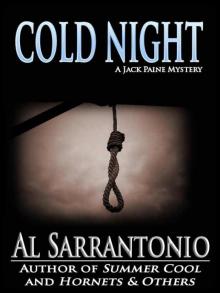 Cold Night (Jack Paine Mysteries)
Cold Night (Jack Paine Mysteries) Haydn of Mars
Haydn of Mars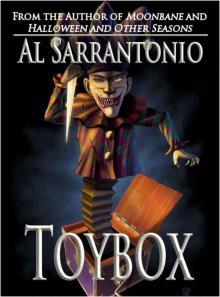 Toybox
Toybox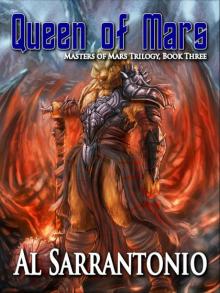 Queen of Mars - Book III in the Masters of Mars Trilogy
Queen of Mars - Book III in the Masters of Mars Trilogy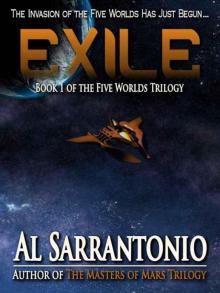 Exile
Exile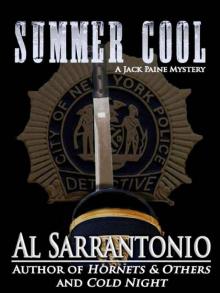 Summer Cool - A Jack Paine Mystery (Jack Paine Mysteries)
Summer Cool - A Jack Paine Mystery (Jack Paine Mysteries)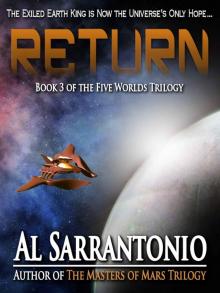 Return - Book III of the Five Worlds Trilogy
Return - Book III of the Five Worlds Trilogy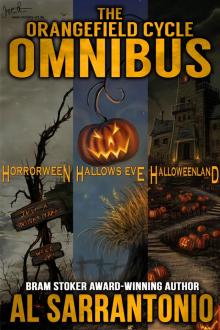 The Orangefield Cycle Omnibus
The Orangefield Cycle Omnibus Summer Cool jp-2
Summer Cool jp-2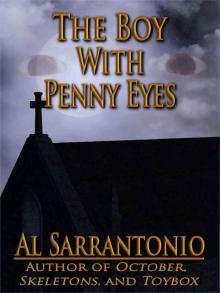 The Boy With Penny Eyes
The Boy With Penny Eyes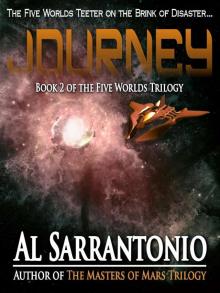 Journey - Book II of the Five Worlds Trilogy
Journey - Book II of the Five Worlds Trilogy Kitt Peak
Kitt Peak Campbell Wood
Campbell Wood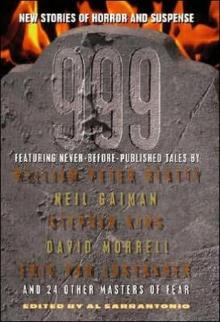 999
999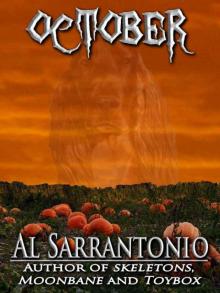 October
October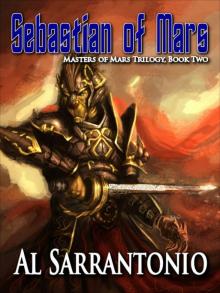 Sebastian of Mars
Sebastian of Mars Moonbane
Moonbane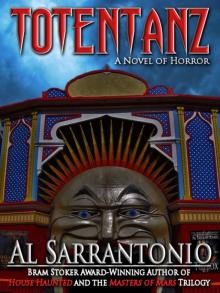 Totentanz
Totentanz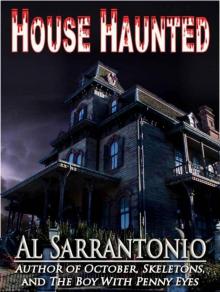 House Haunted
House Haunted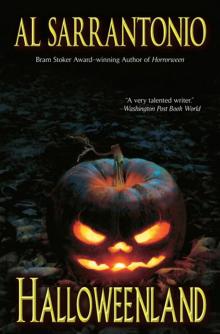 Halloweenland
Halloweenland Hornets and Others
Hornets and Others